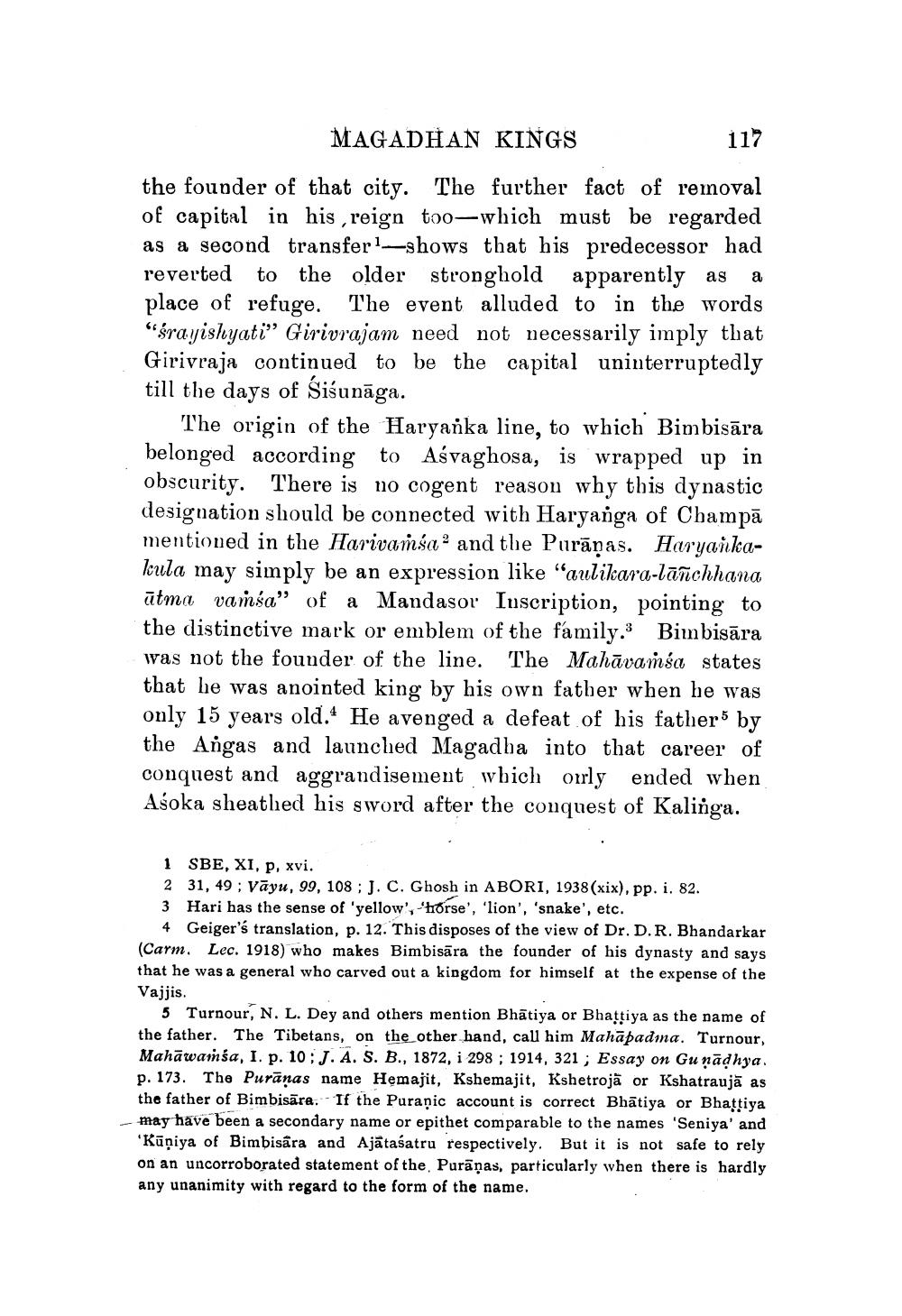________________
112
MAGADHAN KINGS the founder of that city. The further fact of removal of capital in his , reign too—which must be regarded as a second transferl-shows that his predecessor had reverted to the older stronghold apparently as a place of refuge. The event alluded to in the words "śrayishyati" Girivrajam need not necessarily imply that Girivraja continued to be the capital uninterruptedly till the days of Siśunāga.
The origin of the Haryanka line, to which Bimbisāra belonged according to Aśvaghosa, is wrapped up in obscurity. There is no cogent reason why this dynastic designation should be connected with Haryanga of Champā mentioned in the Farivamsao and the Purāṇas. Haryankakula may simply be an expression like “aulikara-lāñchhana ūtma vamsa” of a Mandasor Inscription, pointing to the distinctive mark or emblem of the family. Bimbisāra was not the founder of the line. The Mahāvamsa states that he was anointed king by his own father when he was only 15 years old. He avenged a defeat of his fathers by the Angas and launched Magadba into that career of conquest and aggrandisement wbich orrly ended when Asoka sheathed his sword after the conquest of Kalinga.
1 SBE, XI, p. xvi. 2 31, 49 ; Vāyu, 99, 108 : J. C. Ghosh in ABORI, 1938(xix), pp. i. 82. 3 Hari has the sense of yellow', 'horse', 'lion', 'snake', etc.
4 Geiger's translation, p. 12. This disposes of the view of Dr. D.R. Bhandarkar (Carm. Lec. 1918) who makes Bimbisāra the founder of his dynasty and says that he was a general who carved out a kingdom for himself at the expense of the Vajjis.
5 Turnour, N. L. Dey and others mention Bhātiya or Bhattiya as the name of the father. The Tibetans, on the other hand, call him Mahāpadma. Turnour, Mahāwamsa, I. p. 10; J. A. S. B., 1872, i 298 ; 1914, 321 ; Essay on Gunādhya. p. 173. The Puranas name Hemajit, Kshemajit, Kshetrojā or Kshatraujā as the father of Bimbisāra. If the Puranic account is correct Bhātiya or Bhattiya may have been a secondary name or epithet comparable to the names 'Seniya' and "Kūņiya of Bimbisara and Ajātaśatru respectively. But it is not safe to rely on an uncorroborated statement of the Puranas, particularly when there is hardly any unanimity with regard to the form of the name.




